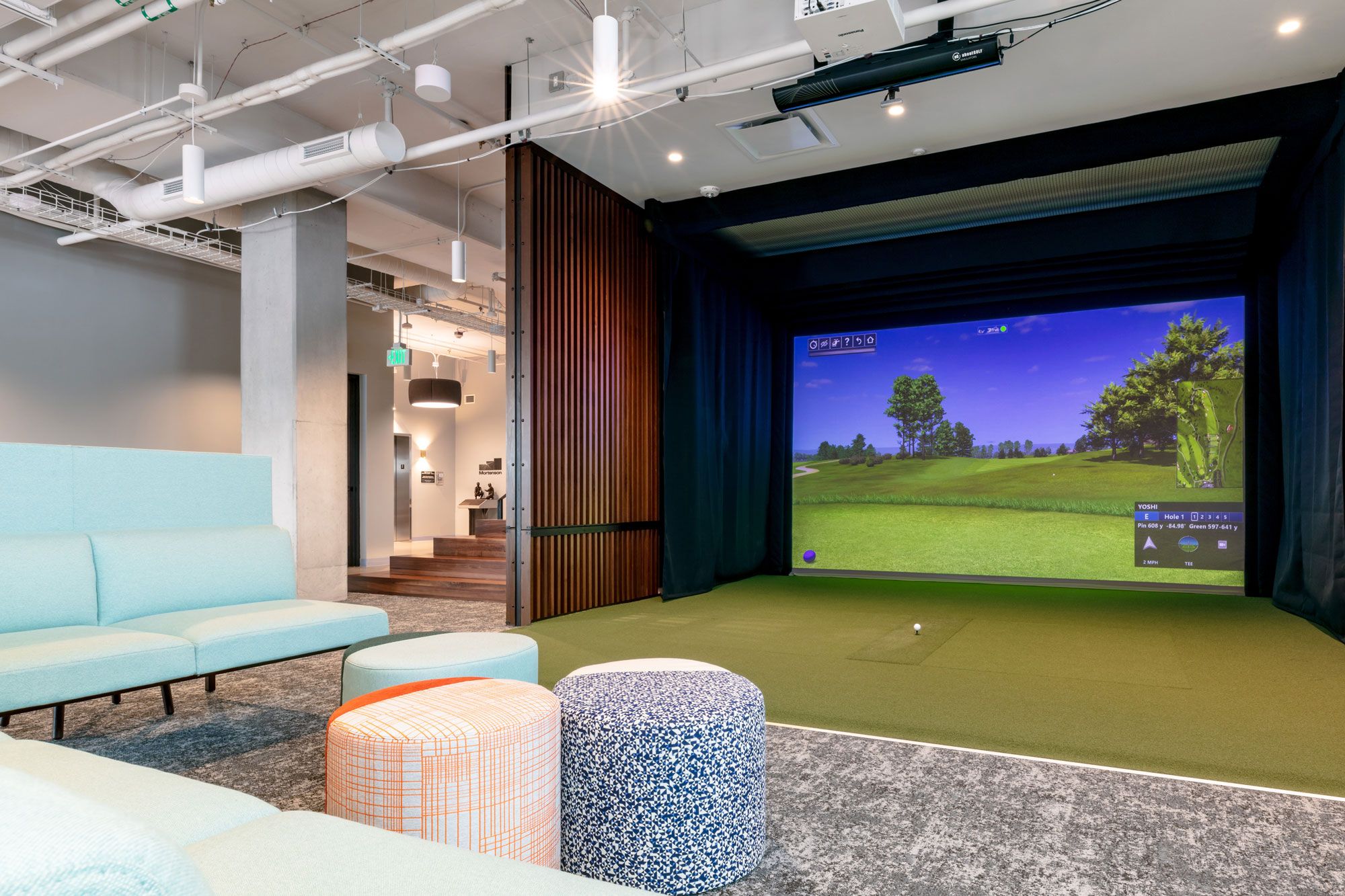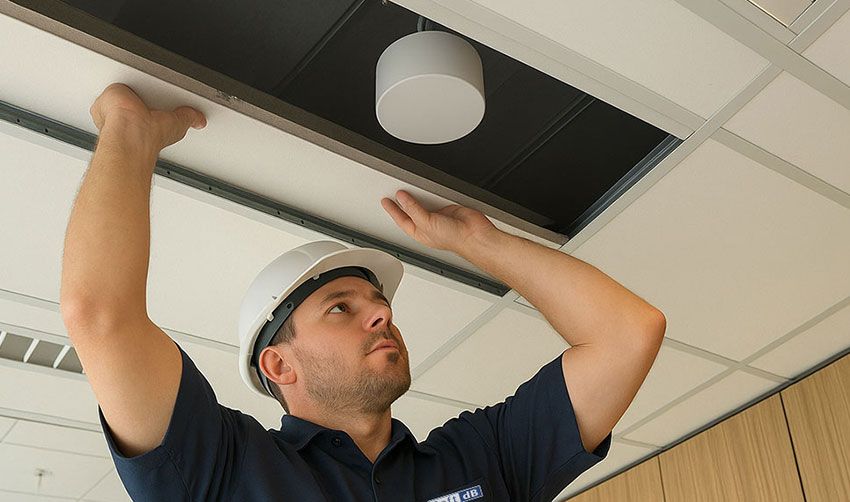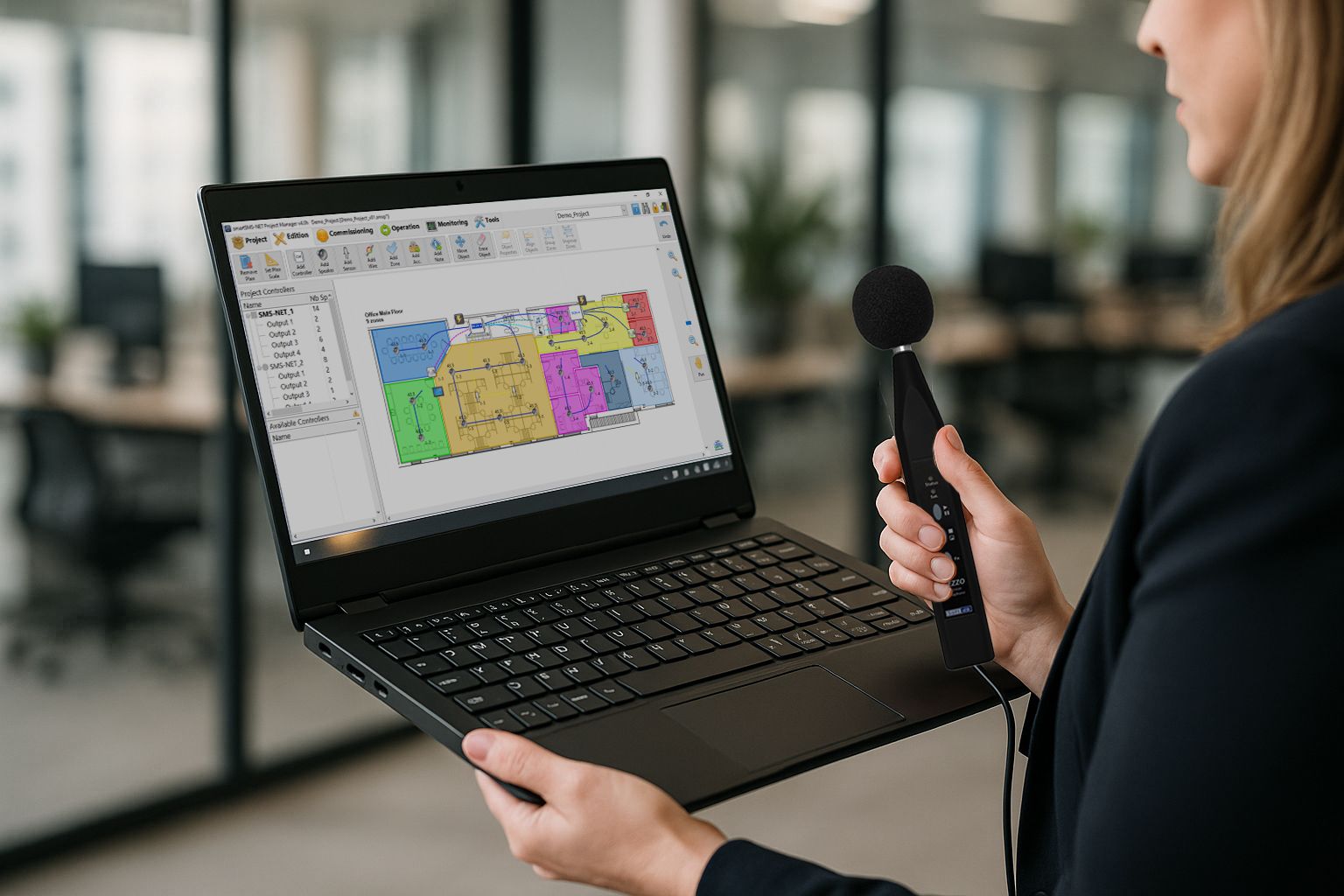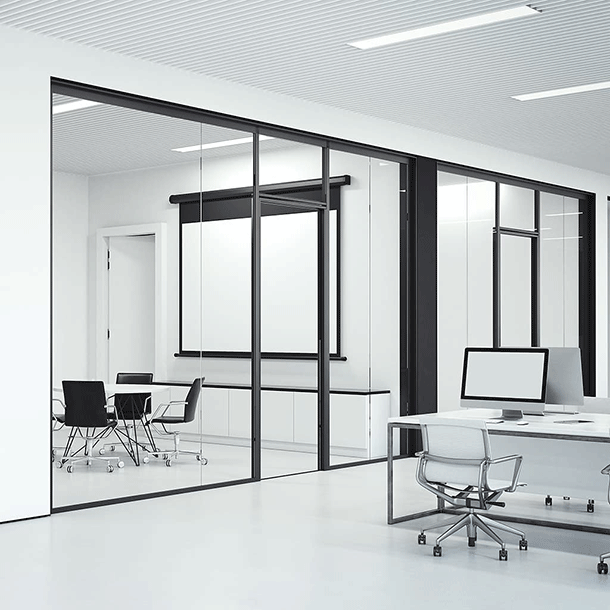When we talk about building performance, we typically hear about energy efficiency, HVAC optimization, lighting control or sustainability certifications. But what is often left out of the conversation is a less visible, yet equally critical factor: acoustics.
From open-plan offices and hybrid workspaces to health care facilities and call centers, poor acoustic design leads to real operational and human costs. These include drops in productivity, increased employee turnover, compliance risks, and even higher energy usage. Yet, despite growing awareness, acoustics remains a blind spot in many facility performance strategies.
FMs and their organizations often overlook the hidden costs of noise in commercial buildings, the importance of acoustic comfort and how proactive sound design — especially through sound masking — can become a powerful tool to optimize the workplace and support organizational goals.
Acoustic comfort as a building performance metric
Facility performance has historically been measured in terms of energy use, maintenance efficiency, or asset lifespan. But emerging standards and certifications—such as WELL Building Standard™ and Fitwel® — are changing the game by including acoustic comfort as a core criterion for occupant health and well-being.
- The WELL v2 standard includes multiple acoustic features (such as sound masking and reverberation control) under its “Sound” concept.
- The U.S. General Services Administration (GSA) also highlights acoustic quality as part of its “Integrated Workplace Acquisition Center” guidelines, citing that poor acoustics can lead to diminished cognitive performance and dissatisfaction.
Why FMs should care
For FMs, this means that acoustics are no longer just a design issue — they are an operational one. Poor sound environments can:
- Lower occupant satisfaction and Net Promoter Scores (NPS)
- Increase churn in high-turnover sectors like healthcare and contact centers
- Create compliance issues (e.g., HIPAA violations due to overheard conversations)
- Lead to underutilization of office space due to noise avoidance
What is sound masking & why is it effective?
One of the most scalable and cost-effective tools to enhance acoustic comfort is sound masking. Unlike soundproofing, which blocks noise physically, sound masking adds a controlled ambient sound — often compared to airflow or soft broadband frequencies — into the environment to make speech and distractions less intelligible.
When implemented correctly, sound masking:
- Reduces speech intelligibility, protecting speech privacy
- Increases speech privacy in open offices and shared meeting areas
- Creates a more consistent acoustic environment across changing occupancy levels
- Supports focused work, even in dynamic or hybrid layouts
Real-world impact
A study by Steelcase found that employees working in environments with properly tuned sound masking systems reported up to 50 percent fewer distractions, and over 35 percent improvement in concentration.
In hospitals, sound masking has been linked to reduced patient complaints, fewer HIPAA violations, and improved staff focus during long shifts.
Where FMs overlook acoustics
 Despite its benefits, acoustics are rarely included in the post-occupancy evaluation or building performance optimization plans. There are three common oversights:
Despite its benefits, acoustics are rarely included in the post-occupancy evaluation or building performance optimization plans. There are three common oversights:
-
No dedicated acoustic budget in retrofits. While lighting and HVAC upgrades are often prioritized in retrofit projects, acoustics are left to “design intent” or are handled late in the process. This can lead to underperforming spaces where noise issues surface after occupancy.
-
Lack of data on noise levels. Few facilities actively monitor real-time acoustic conditions. Emerging sensor-based platforms can help FMs track dB levels, speech privacy metrics, and masking effectiveness, but adoption is still low.
-
Mistaking “quiet” for “good”. Too little ambient noise can actually make environments uncomfortable. Spaces that are too quiet can feel sterile or even amplify speech, making eavesdropping easier. This is why sound masking does not add noise — it balances it.
Sound masking in the era of smart buildings
Modern sound masking systems, like those offered by Soft dB and others, can be integrated with:
- Occupancy sensors to dynamically adjust masking levels
- Building management systems (BMS) for energy and system-wide coordination
- AI-driven workplace analytics to align acoustic settings with room usage patterns
This transforms sound masking into a smart infrastructure tool, not just a one-time install.
Key use cases for sound masking in FM
- Open-plan offices: To support focus work while allowing spontaneous collaboration.
- Meeting rooms/Glass-walled spaces: To prevent sound leakage and improve speech privacy during sensitive discussions.
- Health care facilities: To ensure patient confidentiality, reduce stress, and enhance staff focus.
- Hybrid or activity-based workspaces: To adapt acoustic coverage to unpredictable occupancy and usage shifts.
How to start integrating acoustics into facility performance strategy
-
Conduct an acoustic audit. Use acoustic consultants or certified professionals to evaluate reverberation, noise intrusion, and speech privacy zones.
-
Align acoustic goals with organizational KPIs. Is the goal productivity, satisfaction, compliance, or focus? Acoustic solutions should map back to these outcomes.
-
Use standards to guide implementation. Refer to ANSI/ASA S12.72-2010 (speech privacy), ISO 3382 (room acoustic measurements), and WELL guidelines.
-
Educate stakeholders. Involve HR, IT and designers early. Acoustic strategies work best when they are integrated — not bolted on.

Final thoughts: Making the invisible visible
The cost of ignoring acoustics is not always felt on a balance sheet — but it shows up in employee complaints, attrition, compliance audits, and space underutilization. As buildings evolve to support hybrid work, flexible collaboration and wellness initiatives, acoustics can no longer remain an afterthought.
FMs who proactively integrate sound masking and other adaptive acoustic strategies into their building performance approach will be better positioned to deliver value — not just to buildings, but to the people who use them.
Article originally published at IFMA's FMJ magazine
_____________________________________________________
References
-
Leesman Review 2023. The World's Largest Workplace Effectiveness Benchmarking Survey. leesmanindex.com
-
Banbury, S. P., & Berry, D. C. (1998). Disruption of office-related tasks by speech and office noise. Journal of Applied Psychology.
-
Basex Research. The Cost of Not Paying Attention. 2005.
-
WELL Building Standard v2. International WELL Building Institute. wellcertified.com
-
Steelcase Research. Too Much Noise. steelcase.com/
-
GSA: How to achieve acoustic comfort in the contemporary office gsa.gov
-
ISO 3382: Acoustics – Measurement of room acoustic parameters.
-
ANSI/ASA S12.72-2010: Criteria for Evaluating Speech Privacy. ansi.org
-
Hospitals are noisy. They don’t have to be aamc.org/news/hospitals-are-noisy-they-don-t-have-be
-
Photo Credits: MKM Build Photography, Steve Tsai



